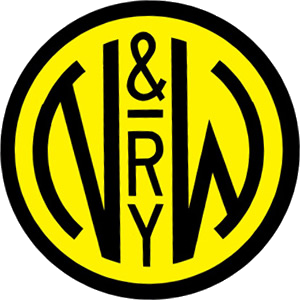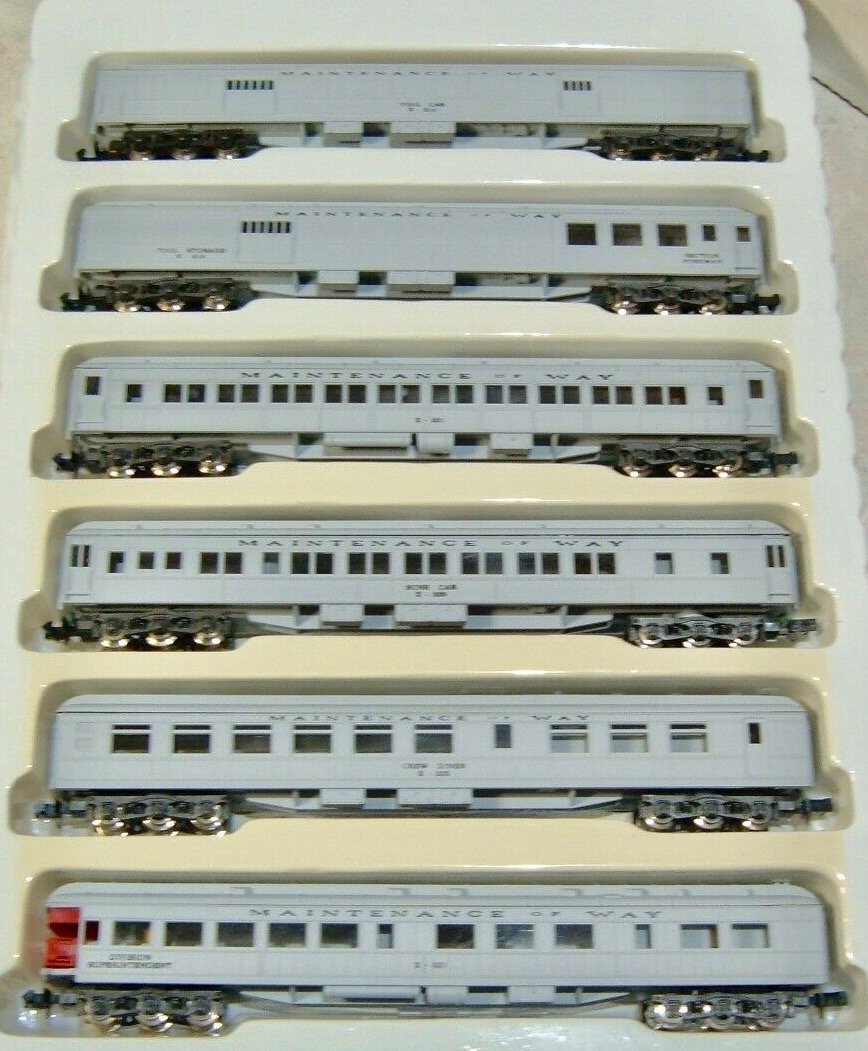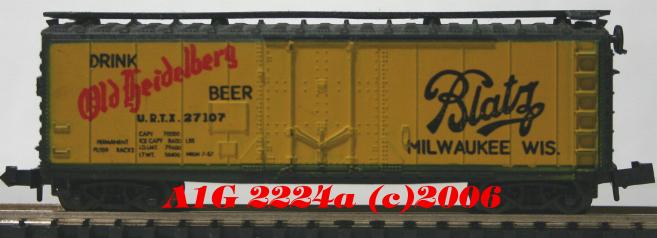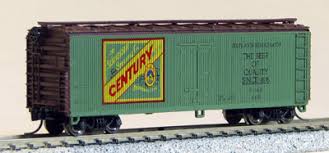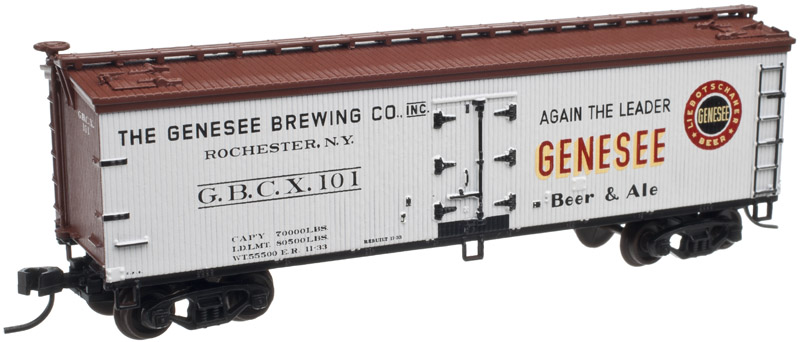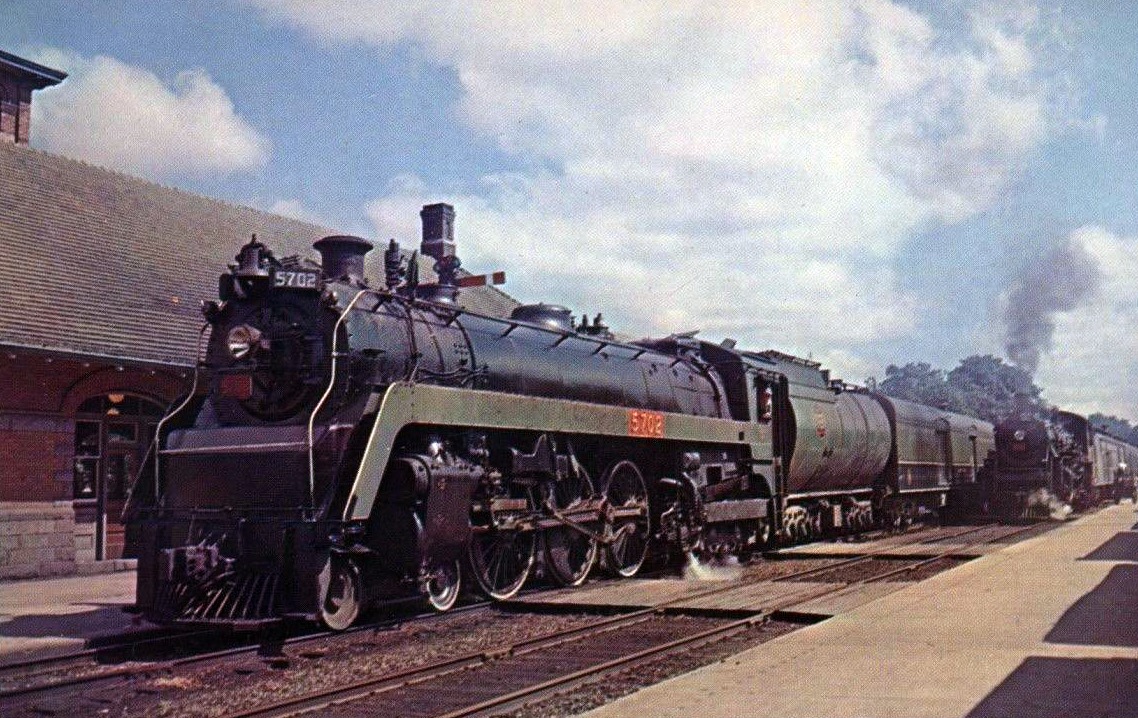Con-Cor - 0001-003076 - Locomotive, Steam, 4-6-4 Hudson - Norfolk & Western
Click to see the details
market
| Stock Number | 0001-003076 |
| Brand | Con-Cor |
| Manufacturer | Con-Cor |
| Body Style | Con-Cor Steam Engine 4-6-4 Hudson |
| Prototype Vehicle | Locomotive, Steam, 4-6-4 Hudson (Details) |
| Road or Company Name | Norfolk & Western (Details) |
| Reporting Marks | NW |
| Paint Color(s) | Maroon and Black with Gold Stripes and Lettering |
| Coupler Type | Rapido Hook |
| Wheel Type | Nickel-Silver Plated Metal |
| Wheel Profile | Small Flange (Low Profile) |
| DCC Readiness | No |
| Item Category | Locomotives |
| Model Type | Steam |
| Model Subtype | 4-6-4 |
| Model Variety | Hudson |
| Prototype Region | North America |
| Prototype Era | NA Era II: Late Steam (1901 - 1938) |
| Scale | 1/160 |
Model Information:
From 1969 to 1994 this model was made for Con-Cor by Kato under contract. The early Katos were a bit sketchy, but they were extensively re-designed in 1975 and the newer version runs a lot better. While not of the same caliber as Kato's later 2-8-2 Mikado, this 1975 steam engine engine is nevertheless an impressive model, much better than its contemporaries from Lima and Rivarossi. In 1994, Con-Cor started production of a new model in China that is of similar quality to the 1975 Kato model and also runs quite well. The Kato-made models are stamped 'Con-Cor Japan' on the bottom.
Prototype History:
Under the Whyte notation for the classification of steam locomotives, 4-6-4 represents the wheel arrangement of four leading wheels, six powered and coupled driving wheels and four trailing wheels. In France where the type was first used, it is known as the Baltic while it became known as the Hudson in most of North America.
The 4-6-4 tender locomotive was first introduced in 1911 and throughout the 1920s to 1940s, the wheel arrangement was widely used in North America and to a lesser extent in the rest of the world. The type combined the basic design principles of the 4-6-2 Pacific type with an improved boiler and larger firebox that necessitated additional support at the rear of the locomotive. In general, the available tractive effort differed little from that of the Pacific, but the steam-raising ability was increased, giving more power at speed. The 4-6-4 was best suited to high-speed running across flat terrain. Since the type had fewer driving wheels than carrying wheels, a smaller percentage of the locomotive's weight contributed to traction, compared to other types. Like the Pacific, it was well suited for high speed passenger trains, but not for starting heavy freight trains and slogging on long sustained grades, where more pairs of driving wheels are better.
The first 4-6-4 in the United States of America, the J-1 of the New York Central Railroad, was built in 1927 to the railroad’s design by the American Locomotive Company (ALCO). There, the type was named the Hudson after the Hudson River.
From Wikipedia
The 4-6-4 tender locomotive was first introduced in 1911 and throughout the 1920s to 1940s, the wheel arrangement was widely used in North America and to a lesser extent in the rest of the world. The type combined the basic design principles of the 4-6-2 Pacific type with an improved boiler and larger firebox that necessitated additional support at the rear of the locomotive. In general, the available tractive effort differed little from that of the Pacific, but the steam-raising ability was increased, giving more power at speed. The 4-6-4 was best suited to high-speed running across flat terrain. Since the type had fewer driving wheels than carrying wheels, a smaller percentage of the locomotive's weight contributed to traction, compared to other types. Like the Pacific, it was well suited for high speed passenger trains, but not for starting heavy freight trains and slogging on long sustained grades, where more pairs of driving wheels are better.
The first 4-6-4 in the United States of America, the J-1 of the New York Central Railroad, was built in 1927 to the railroad’s design by the American Locomotive Company (ALCO). There, the type was named the Hudson after the Hudson River.
From Wikipedia
Road Name History:
The Norfolk and Western Railway (reporting mark NW), was a US class I railroad, formed by more than 200 railroad mergers between 1838 and 1982. It was headquartered in Roanoke, Virginia, for most of its 150-year existence. Its motto was "Precision Transportation"; it had a variety of nicknames, including "King Coal" and "British Railway of America" even though the N&W had mostly articulated steam on its roster. During the Civil War, the N&W was the biggest railroad in the south and moved most of the products with their steam locomotives to help the South the best way they could.
NW was famous for manufacturing its own steam locomotives, which were produced at the Roanoke Shops, as well as its own hopper cars. Around 1960, NW became the last major American railroad to convert from steam locomotives to diesel motive power but didn't retire its last remaining Y class locomotives until 1964 and 1965. By 1965, steam on class I railroads was gone but steam wasn't gone on class II railroads until 1974 and class III and mining railroads retired their steam locomotives from their active roster until 1983. By 1983, steam in America on class I, II, III, and mining railroads had finally closed the chapter on America's 150 years of steam from 1830 - 1983.
In December 1959, NW merged with the Virginian Railway (reporting mark VGN), a longtime rival in the Pocahontas coal region. By 1970, other mergers with the Nickel Plate Road and Wabash formed a system that operated 7,595 miles (12,223 km) of road on 14,881 miles (23,949 km) of track from North Carolina to New York and from Virginia to Iowa.
In 1980, NW teamed up with the Southern Railway, another profitable carrier and created the Norfolk Southern Corporation holding company by merging its business operations with the business operations of the Southern Railway. The NW and the Southern Railway continued as separate railroads now under one holding company.
On December 31, 1990, the Southern Railway was renamed "Norfolk Southern Railway" to reflect the Norfolk Southern Corporation and on the same day, the renamed Norfolk Southern Railway gained full control of the Norfolk and Western Railway with the Norfolk and Western being transferred from the holding company to the renamed Norfolk Southern Railway, this began the final years of Norfolk and Western which was absorbed into the renamed Norfolk Southern Railway seven years later in 1997 (1990 to 1997 the Norfolk and Western continued operating by using paper operations).
In 1997 during the Conrail battle with CSX, Norfolk Southern Corporation's principal railroad, the renamed Norfolk Southern Railway, absorbed the Norfolk and Western Railway into their rail system, ending the existence of the Norfolk and Western Railway and having the renamed Norfolk Southern Railway becoming the only railroad in the entire Norfolk Southern system after that.
NW was famous for manufacturing its own steam locomotives, which were produced at the Roanoke Shops, as well as its own hopper cars. Around 1960, NW became the last major American railroad to convert from steam locomotives to diesel motive power but didn't retire its last remaining Y class locomotives until 1964 and 1965. By 1965, steam on class I railroads was gone but steam wasn't gone on class II railroads until 1974 and class III and mining railroads retired their steam locomotives from their active roster until 1983. By 1983, steam in America on class I, II, III, and mining railroads had finally closed the chapter on America's 150 years of steam from 1830 - 1983.
In December 1959, NW merged with the Virginian Railway (reporting mark VGN), a longtime rival in the Pocahontas coal region. By 1970, other mergers with the Nickel Plate Road and Wabash formed a system that operated 7,595 miles (12,223 km) of road on 14,881 miles (23,949 km) of track from North Carolina to New York and from Virginia to Iowa.
In 1980, NW teamed up with the Southern Railway, another profitable carrier and created the Norfolk Southern Corporation holding company by merging its business operations with the business operations of the Southern Railway. The NW and the Southern Railway continued as separate railroads now under one holding company.
On December 31, 1990, the Southern Railway was renamed "Norfolk Southern Railway" to reflect the Norfolk Southern Corporation and on the same day, the renamed Norfolk Southern Railway gained full control of the Norfolk and Western Railway with the Norfolk and Western being transferred from the holding company to the renamed Norfolk Southern Railway, this began the final years of Norfolk and Western which was absorbed into the renamed Norfolk Southern Railway seven years later in 1997 (1990 to 1997 the Norfolk and Western continued operating by using paper operations).
In 1997 during the Conrail battle with CSX, Norfolk Southern Corporation's principal railroad, the renamed Norfolk Southern Railway, absorbed the Norfolk and Western Railway into their rail system, ending the existence of the Norfolk and Western Railway and having the renamed Norfolk Southern Railway becoming the only railroad in the entire Norfolk Southern system after that.
Brand/Importer Information:
Con-Cor has been in business since 1962. Many things have changed over time as originally they were a complete manufacturing operation in the USA and at one time had upwards of 45 employees. They not only designed the models,but they also built their own molds, did injection molding, painting, printing and packaging on their models.
Currently, most of their manufacturing has been moved overseas and now they import 90% of their products as totally finished goods, or in finished components. They only do some incidental manufacturing today within the USA.
Important Note: The Con-Cor product numbering can be very confusing. Please see here in the article how to properly enter Con-Cor stock numbers in the TroveStar database.
Currently, most of their manufacturing has been moved overseas and now they import 90% of their products as totally finished goods, or in finished components. They only do some incidental manufacturing today within the USA.
Important Note: The Con-Cor product numbering can be very confusing. Please see here in the article how to properly enter Con-Cor stock numbers in the TroveStar database.
Item created by: gdm
on 2016-07-28 05:16:17
Last edited by: gdm on 2018-03-07 12:00:40
If you see errors or missing data in this entry, please feel free to log in and edit it. Anyone with a Gmail account can log in instantly.
Last edited by: gdm on 2018-03-07 12:00:40
If you see errors or missing data in this entry, please feel free to log in and edit it. Anyone with a Gmail account can log in instantly.




